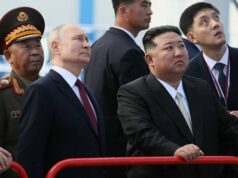Source : ABC News
Two cars powered by hydrogen derived from ammonia will be tested in Brisbane today thanks to a Queensland breakthrough that CSIRO researchers say could turn Australia into a renewable energy superpower.
Key points:
• Australian fuel could soon be in high demand for hydrogen-powered cars across Asia
• It’s the first time hydrogen cars have been powered with a fuel derived from ammonia
• Both Toyota and Hyundai have invested millions of dollars into hydrogen-powered cars
CSIRO principal research scientist Michael Dolan said it was a very exciting day for a project that has been a decade in the making.
“We started out with what we thought was a good idea, it is exciting to see it on the cusp of commercial deployment,” he said.

For the past decade, researchers have worked on producing ultra-high purity hydrogen using a unique membrane technology.
The membrane breakthrough will allow hydrogen to be safely transported and used as a mass production energy source.
“We are certainly the first to demonstrate the production of very clean hydrogen from ammonia,” Dr Dolan said.
“Today is the very first time in the world that hydrogen cars have been fuelled with a fuel derived from ammonia — carbon-free fuel.”
Program leader David Harris said Australia has a huge source of renewable energy — sunlight and wind — that can be utilised to produce hydrogen.
But the highly flammable element is difficult to ship long distances because of its low density.
CSIRO researchers found a way to turn Australian-made hydrogen into ammonia, meaning it could be shipped safely to the mass market of Asia.
Media player: “Space” to play, “M” to mute, “left” and “right” to seek.
It is converted back into hydrogen using their membrane, then pumped into hydrogen-powered cars.
As of now, there are only five such cars in Australia, but there are tens of thousands across Japan, South Korea and Singapore.
“The key here is we can transport the hydrogen from the place where it is produced from renewable energy — let’s say maybe that is in outback WA — and we can ship that form of ammonia anywhere in the world,” Dr Harris said.
Independent industry association Hydrogen Mobility Australia said the technology has the potential to fill a gap in the chain to supply fuel cell electric vehicles (FCEVs) with low-emissions hydrogen produced in Australia.

CEO, Claire Johnson said use of hydrogen as a transport fuel is being recognised globally as a solution to reducing greenhouse gas emissions and the world’s reliance on fossil fuels.
“Hydrogen powered vehicles, including buses, trucks, trains, forklifts as well as passenger cars are being manufactured by leading automotive companies and deployed worldwide as part of their efforts to decarbonise the transport sector,” she said.

Ms Johnson said 15 member companies are committed to developing a hydrogen refuelling station network across Australia, along with two pilot sites including a portable refuelling truck and station in Sydney.
“In parallel, local and state governments have also committed to build hydrogen refuelling infrastructure with stations set to come online in the next 12 to18 months,” she said.
Hydrogen-powered cars could be on sale in Australia within the next two years.
‘A massive step for Australia’
Both Toyota and Hyundai have invested millions of dollars into hydrogen-powered cars.
Today’s road test will be on Hyundai’s flagship eco car the Nexo SUV, and Toyota’s Mirai.
The ABC got a sneak peek at the testing station where the cars were fuelled up and given a short test at CSIRO’s Pullenvale technology hub in western Brisbane.
Hyundai spokesman Scott Nargar said the main advantage of hydrogen over electric cars was they could be filled up in three minutes like a normal car and had a range of up to 800 kilometres.
“So they are just like driving a normal car but there will be zero emissions,” he said.

“From a car manufacturer’s point of view, we see this as a massive step for Australia.
“Working in and out of South Korea quite regularly, I know Hyundai has a massive contract to provide hydrogen buses to the Korean Government.
“It just announced 16,000 hydrogen-powered cars will go on the road and 310 hydrogen refilling stations across the country under a five-year plan.
“They need to power those cars from somewhere so why can’t it be renewable hydrogen from Australia?”

“Ammonia already has established routes for transportation and to transport at relatively normal temperatures.
“When it gets to where it is going they can actually pull the hydrogen out using the CSIRO technology, which opens up fuel cell technology to markets that previously did not have the technology.
“From an energy perspective, the ability to move solar energy or wind energy from one place to another using ammonia opens up doors that previously would have been closed because of the difficulties of transporting hydrogen.”
Australia’s next export boom
The CSIRO team has already received expressions of interest from Japan, South Korea and Europe, with industry players looking at taking up supplies initially to fuel commercial vehicles like buses, taxis, trucks and trains.

Dr Dolan said a million hydrogen-powered cars were expected to hit the streets by 2025.
Currently hydrogen-fuelled cars sell for about $80,000, but, as with electric cars run on power-grid charged batteries, the price is expected to fall as production increases.
Mr Nargar said they expected to see price parity with petrol and diesel cars within a decade.
Dr Dolan said the cost for the fuel would be around $15 a kilogram, with an average car holding five kilos of pure hydrogen in a tank.
“But the efficiency of the car is twice as good as current gasoline cars, so you can actually drive twice as far on a tank,” he said.
Dr Dolan said renewable hydrogen was seen as Australia’s next export boom.
“It could potentially rival our LNG export industry,” he said.
“As of this year Australia is the world’s biggest natural gas exporter. Hydrogen could be in the same position in the next couple of decades.”




